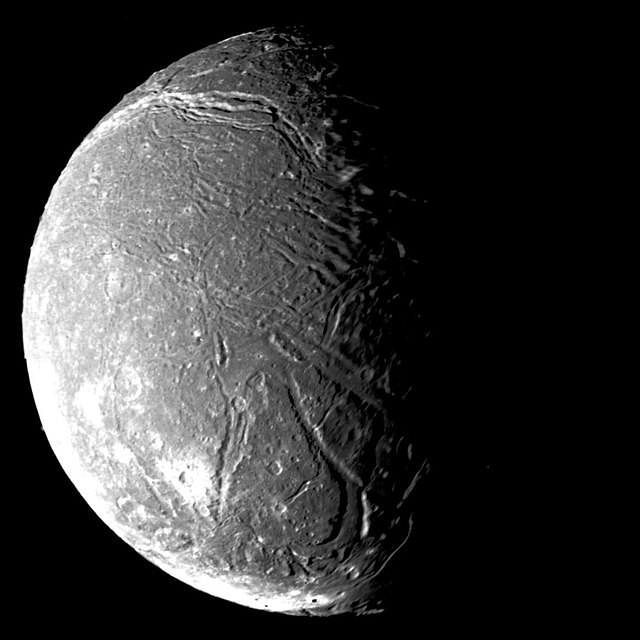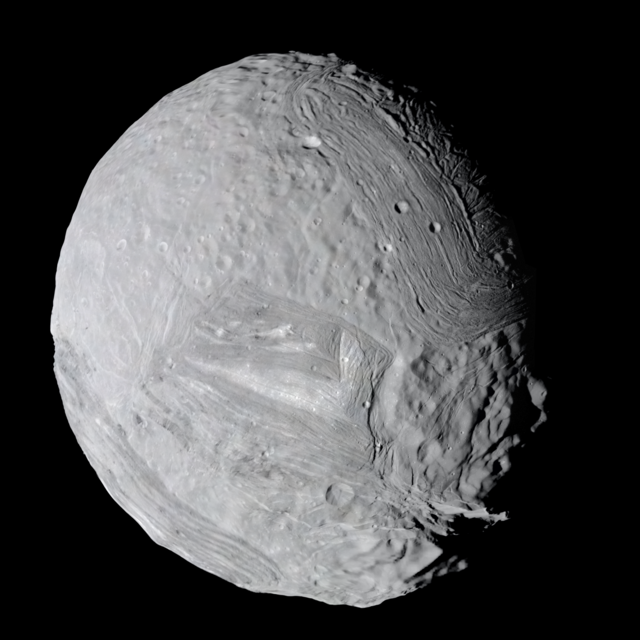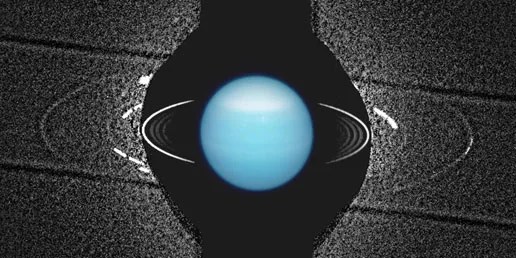Atmospheric & Ring Features

Notable Phenomena
Polar Hoods
Bright methane-ice haze caps appear over each pole during summer, reflecting sunlight and giving the planet a softly glowing crown.
Transient Dark Spots
Voyager 2 discovered a “Great Dark Spot” in 1986; Hubble has since watched similar storm vortices form and fade in Uranus’s upper clouds.
Narrow Ring System
Thirteen ultra-dark, razor-thin rings—dominated by the dense ε-ring—encircle Uranus, shepherded by tiny moons like Cordelia and Ophelia.












